
Sainyabuli Province: The Heartbeat of Rural Laos
Discover the untouched beauty and rich cultural heritage of Sainyabuli Province in Laos, a hidden gem perfect for nature lovers and cultural enthusiasts.
Nestled in the northwestern corner of Laos, Sainyabuli Province offers a unique glimpse into the country's rural life and natural beauty. This province is less frequented by tourists, making it an ideal destination for those seeking tranquility and an authentic Laotian experience. The landscape here is characterized by rolling hills, lush forests, and pristine rivers, offering breathtaking views and countless opportunities for outdoor activities like trekking and bird watching. Sainyabuli is also home to the annual Elephant Festival, a vibrant event that celebrates the cultural significance of elephants in Laotian society. During the festival, visitors can witness traditional music and dance performances, participate in elephant processions, and enjoy local cuisine. The province's commitment to elephant conservation is evident, with several sanctuaries dedicated to the protection and care of these majestic animals. In addition to its natural and cultural attractions, Sainyabuli is dotted with charming villages where you can interact with friendly locals and learn about their way of life. The province's remote location means that it has retained much of its traditional charm, making it a perfect spot for those wanting to escape the hustle and bustle of more touristy areas. Whether you're exploring the dense forests or enjoying a quiet moment by the river, Sainyabuli Province promises an unforgettable journey into the heart of rural Laos.
Local tips in Sainyabuli Province
- Visit during the Elephant Festival in February for a unique cultural experience.
- Hire a local guide for trekking to learn more about the region's flora and fauna.
- Bring cash as ATMs are scarce in remote areas.
- Respect local customs and dress modestly, especially when visiting villages.
- Try the local cuisine, particularly dishes made with fresh river fish.
Sainyabuli Province: The Heartbeat of Rural Laos
Nestled in the northwestern corner of Laos, Sainyabuli Province offers a unique glimpse into the country's rural life and natural beauty. This province is less frequented by tourists, making it an ideal destination for those seeking tranquility and an authentic Laotian experience. The landscape here is characterized by rolling hills, lush forests, and pristine rivers, offering breathtaking views and countless opportunities for outdoor activities like trekking and bird watching. Sainyabuli is also home to the annual Elephant Festival, a vibrant event that celebrates the cultural significance of elephants in Laotian society. During the festival, visitors can witness traditional music and dance performances, participate in elephant processions, and enjoy local cuisine. The province's commitment to elephant conservation is evident, with several sanctuaries dedicated to the protection and care of these majestic animals. In addition to its natural and cultural attractions, Sainyabuli is dotted with charming villages where you can interact with friendly locals and learn about their way of life. The province's remote location means that it has retained much of its traditional charm, making it a perfect spot for those wanting to escape the hustle and bustle of more touristy areas. Whether you're exploring the dense forests or enjoying a quiet moment by the river, Sainyabuli Province promises an unforgettable journey into the heart of rural Laos.
When is the best time to go to Sainyabuli Province?
Iconic landmarks you can’t miss
Patuxay - Victory Monument
Discover the rich history and breathtaking views at Patuxay, Vientiane's iconic Victory Monument, a must-visit for every traveler in Laos.

Kuang Si Waterfall
Explore the breathtaking beauty of Kuang Si Waterfall, a natural wonder in Laos featuring turquoise pools and lush landscapes, perfect for nature lovers and adventurers.

Pha That Luang Vientiane
Explore the majestic Pha That Luang, a symbol of Laotian heritage and an architectural marvel in the heart of Vientiane.

Phousi Hill
Discover the spiritual essence of Laos at Phousi Hill, a serene destination of breathtaking views and cultural significance in Luang Prabang.

Wat Xiengthong
Discover the breathtaking beauty and spiritual significance of Wat Xiengthong, a must-visit Buddhist temple in Luang Prabang, Laos.

National Museum
Uncover the rich cultural heritage of Laos at the National Museum in Luang Prabang, a former royal palace filled with history and art.

Tat Sae Waterfalls
Experience the breathtaking beauty of Tat Sae Waterfalls, a hidden gem in Laos perfect for relaxation and adventure amidst nature's tranquility.

Pak Ou Caves
Discover the spiritual heart of Laos at Pak Ou Caves, home to thousands of Buddha statues nestled along the Mekong River in a stunning natural setting.

Ban Xang Hai
Explore Ban Xang Hai: A Laotian village rich in culture, breathtaking views, and the art of traditional rice whiskey production.

Elephant Conservation Center
Discover the heartwarming mission of the Elephant Conservation Center, a sanctuary dedicated to the protection of elephants in Laos.
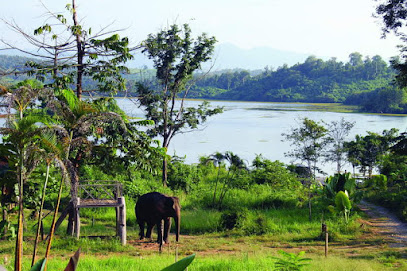
Garavek Storytelling
Discover the magic of Laotian folklore at Garavek Storytelling in Luang Prabang, where captivating performances bring ancient tales to life.

MandaLao Restaurant and Elephant Rescue Park
Experience authentic Lao cuisine and ethical elephant conservation at MandaLao Restaurant and Elephant Rescue Park, where dining meets compassion.

Manifa Elephant Camp Luang Prabang Office
Discover the enchanting world of elephants and outdoor adventures at Manifa Elephant Camp in Luang Prabang, a perfect blend of nature and culture.

Elephant Conservation Center, Luang Prabang
Immerse yourself in the world of elephants at Luang Prabang's Elephant Conservation Center, where education meets wildlife preservation.

Luang Prabang Old Quarter
Experience the charm of Luang Prabang Old Quarter, where ancient temples and colonial architecture create a captivating cultural tapestry.

Unmissable attractions to see
Pha That Luang Vientiane
Discover the majestic Pha That Luang, a stunning golden stupa and the heart of Laotian culture, in Vientiane, Laos.
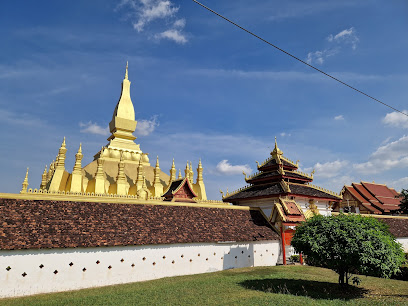
Phousi Hill
Discover the stunning views and cultural richness of Phousi Hill in Luang Prabang, a perfect blend of nature and spirituality.

National Museum
Explore the National Museum of Luang Prabang, a heritage gem showcasing Laos' royal history and cultural treasures in a stunning architectural setting.

Phosy Market
Explore the vibrant Phosy Market in Luang Prabang, where local culture, fresh produce, and delicious street food come together for an unforgettable experience.

Khoun Moung Keo Waterfall
Experience the enchanting beauty of Khoun Moung Keo Waterfall, a serene escape in the heart of Ban Long, Laos, perfect for nature lovers and adventurers.

Wat Wisunarat
Explore the serene beauty and rich history of Wat Wisunarat, an iconic Buddhist temple in the heart of Luang Prabang, Laos.

Nahm Dong Park
Explore Nahm Dong Park: A Nature Lover's Paradise in Luang Prabang with Hiking, Waterfalls, and Serene Landscapes.
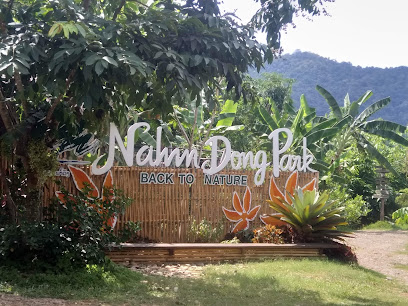
Elephant Conservation Center
Explore the Elephant Conservation Center in Sayaboury, a sanctuary dedicated to the preservation and rehabilitation of elephants in Laos.

Haw Phra Bang
Explore the serene and culturally rich Haw Phra Bang temple in Luang Prabang, a harmonious blend of spirituality and stunning architecture.

Wat May Souvannapoumaram
Discover the beauty and tranquility of Wat May Souvannapoumaram, a stunning Buddhist temple in the heart of Luang Prabang, Laos.
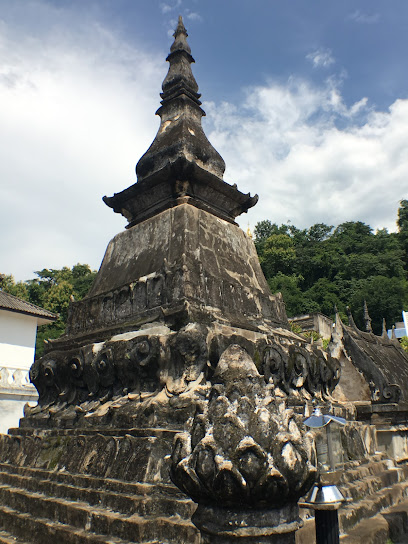
Heuan Chan Heritage House
Explore the cultural heritage of Laos at Heuan Chan Heritage House, a captivating museum and cultural center in the heart of Luang Prabang.

Wat Siphoutthabath
Discover the tranquil beauty and cultural richness of Wat Siphoutthabath, a spiritual haven in Luang Prabang, Laos.

Manifa Elephant Camp Luang Prabang Office
Experience the beauty of wildlife and nature at Manifa Elephant Camp in Luang Prabang, where adventure meets conservation.

Patoumeuang Garden
Experience the tranquil beauty of Patoumeuang Garden in Xayaboury, a perfect escape into nature's vibrant oasis.

Wat Nong Sikhounmuang
Experience the tranquility and cultural richness of Wat Nong Sikhounmuang, a stunning Buddhist temple in the heart of Luang Prabang.

Essential places to dine
Manda de Laos
Experience authentic Laotian cuisine at Manda de Laos in Luang Prabang—where tradition meets modernity in every dish.

Dyen Sabai Restaurant
Experience authentic Lao cuisine with stunning Mekong River views at Dyen Sabai Restaurant in Luang Prabang.

Bamboo Garden Restaurant
Discover authentic Laotian flavors at Bamboo Garden Restaurant in Luang Prabang's serene garden setting.

BOUANG Asian Eatery
Experience authentic Southeast Asian cuisine at BOUANG Asian Eatery in Luang Prabang - where every bite tells a story.

Khaiphaen
Discover the rich flavors of Laos at Khaiphaen, where authentic dishes meet sustainable practices in the heart of Luang Prabang.

La Silapa Italian & Lao Kitchen
Discover culinary excellence at La Silapa Italian & Lao Kitchen, where authentic Italian meets vibrant Laotian flavors in Luang Prabang.
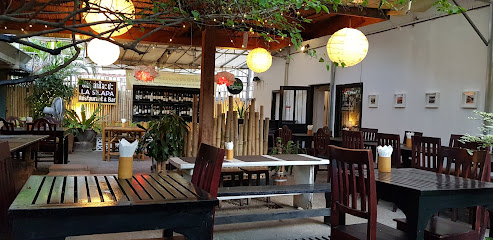
L’Elephant
Experience exquisite French cuisine at L’Elephant in Luang Prabang - where local charm meets gourmet dining.

Bamboo Tree Restaurant and Cooking School
Experience authentic Laotian cuisine at Bamboo Tree Restaurant & Cooking School in Luang Prabang - where food meets culture!

good people good food good price
Discover authentic Laotian cuisine in Luang Prabang with delicious dishes at unbeatable prices.

Kin Khao @Heuan chan Heritage house
Experience authentic Asian Fusion cuisine at Kin Khao @Heuan Chan Heritage House in Luang Prabang, where tradition meets culinary innovation.

ຮ້ານອາຫານຕັ້ງຫລັກ Tang Lak Restaurant
Experience authentic Laotian flavors at Tang Lak Restaurant in Xayaboury—where tradition meets taste in every dish.

Tamnak Lao Restaurant Luang Prabang
Discover the essence of Laotian cuisine at Tamnak Lao Restaurant in Luang Prabang - where tradition meets flavor in every dish.

Local Restaurant Ban Jek
Discover authentic Laos street food at Local Restaurant Ban Jek in Luang Prabang – a true culinary gem offering rich flavors and warm hospitality.

Lang Ban Garden Restaurant
Experience exquisite dining at Lang Ban Garden Restaurant in Luang Prabang - where fresh ingredients meet traditional flavors amidst lush gardens.

MandaLao Restaurant and Elephant Rescue Park
Discover exquisite Lao cuisine while supporting elephant conservation at MandaLao Restaurant and Elephant Rescue Park.
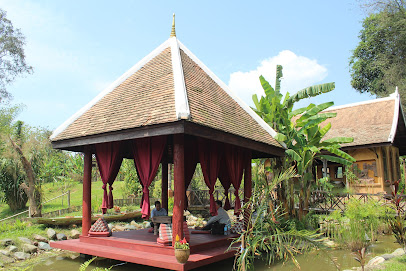
Markets, malls and hidden boutiques
Sunhoh Supermarket
Explore authentic Asian flavors at Sunhoh Supermarket, a vibrant Chinese marketplace in Xayaboury offering diverse culinary delights.

Chinese Market-Sainyabuli / ຕະຫລາດຈີນ-ໄຊຍະບູລີ
Discover the essence of Sainyabuli at the Chinese Market, where local flavors and vibrant culture come together in a unique shopping experience.
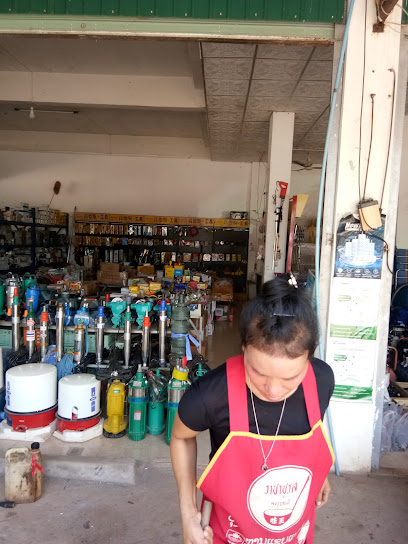
Ma Te Sai
Explore the vibrant culture of Luang Prabang at Ma Te Sai, where unique gifts, rich coffee, and unforgettable boat tours await.

Pathana Boupha Antique House
Immerse yourself in Laos's rich heritage at Pathana Boupha Antique House - a captivating destination for antique and craft lovers.

xp com
Explore the latest in electronics at XP Com, Xayaboury's premier destination for tech enthusiasts and travelers.

Rustic Gallery
Discover the heart of Laotian culture at Rustic Gallery, where unique handmade souvenirs await in the charming city of Luang Prabang.

Nang Boua Loy Silk shop
Discover the beauty of handcrafted Lao silk at Nang Boua Loy Silk Shop in Luang Prabang, where tradition meets artistry.

ຮ້ານ ມ່ວງ ເຄື່ອງນອນ ແລະ ແອເຢັນ
Explore the unique offerings of ຮ້ານ ມ່ວງ ເຄື່ອງນອນ ແລະ ແອເຢັນ in Xayaboury, where local culture and craftsmanship come alive.
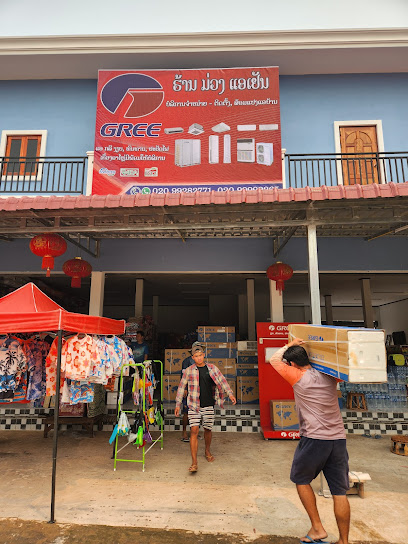
Bounleua Mini Store
Explore Bounleua Mini Store in Tha Deua for unique home goods and authentic local souvenirs that capture the essence of your travels.

Garden SMT01
Explore Garden SMT01 in Laos - your ultimate destination for stunning plants and garden supplies, where nature meets tranquility.

Ovaltine ພູເຂົາໄຟ ນາງຂວັນໄຈ ແຂວງໄຊຍະບູລີ
Discover the charm of Ovaltine in Xayaboury, a cozy coffee shop perfect for relaxation and indulging in quality brews.
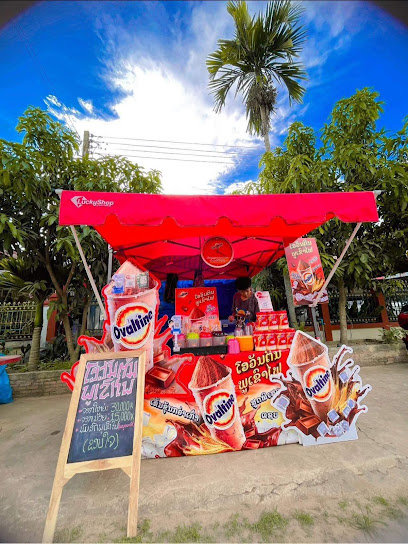
Bounteu Furniture & Beauty Shop
Explore the enchanting Bounteu Furniture & Beauty Shop in Luang Prabang for exquisite beauty products and charming home furnishings.

ຄຳພຸດມໍເຕີ Khamphoud Motor
Khamphoud Motor: Explore Laos with Confidence from a Trusted Car Dealership in Xayaboury.

ຮ້ານຂາຍເຄື່ອງ ນາງ ຟອງ ສາຂາ2
Explore the heart of local culture at ຮ້ານຂາຍເຄື່ອງ ນາງ ຟອງ ສາຂາ2 in ເມືອງຊຽງຮ່ອນ, where every item tells a story.

Mookda ກິຟຊ໋ອບ
Discover authentic Laotian souvenirs and handcrafted treasures at Mookda Gift Shop in Xayaboury, a true delight for all visitors.

Essential bars & hidden hideouts
Maolin Tavern
Experience the vibrant atmosphere of Maolin Tavern in Luang Prabang, where local drinks and friendly faces await you.

Aussie Bar - Sports Bar
Experience the vibrant atmosphere of Aussie Bar in Luang Prabang, where sports, comfort food, and great drinks come together for an unforgettable time.

Artisan Bar
Discover the vibrant Artisan Bar in Luang Prabang, where innovative cocktails meet a cozy speakeasy vibe, perfect for relaxation and socializing.
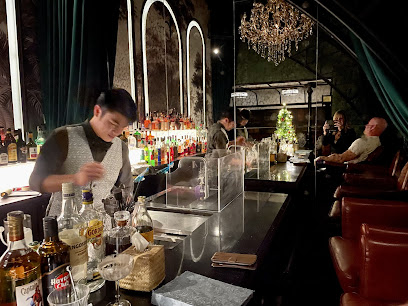
LPMC Bar & Restaurant
Discover LPMC Bar & Restaurant in Sakarine for a vibrant atmosphere, exquisite local flavors, and an extensive drink selection to unwind after your adventures.

Bounthavy
Discover Bounthavy, Luang Prabang's vibrant bar offering a unique blend of local flavors and a lively atmosphere for an unforgettable nightlife experience.

Chillpub And Restaurant
Experience the vibrant atmosphere and delicious grilled dishes at Chillpub And Restaurant in Xiang Ngeun - a perfect spot for food and fun.

ຣີສອດ 3 ເອື້ອຍນ້ອງ ຣຸ້ງທອງ
Discover the joy of singing at ຣີສອດ 3 ເອື້ອຍນ້ອງ ຣຸ້ງທອງ, Xayaboury’s top karaoke bar, where every night is a celebration of music and fun.

Sunset Bar & Restaurant
Experience the best of Pak Beng at Sunset Bar & Restaurant, where exquisite dining meets stunning Mekong River sunsets.

Jeck pub ເຈັກພັບ
Discover Jeck Pub, a lively social hub in Ban Phonsai, where locals and tourists come together to enjoy great drinks and an inviting atmosphere.

ร้านสายน้ำแก่นวิว
Discover tranquility at ร้านสายน้ำแก่นวิว, a charming bar in Ban Phonsai, offering stunning views and refreshing local drinks.

ຮ້ານອາຫານດາວຟ້າ
Experience the vibrant nightlife at ຮ້ານອາຫານດາວຟ້າ, a lively bar in Xayaboury offering a mix of local and international drinks.

The Best bar& Restaurant
Experience the vibrant flavors and lively atmosphere at The Best Bar & Restaurant in Ban Phonsaad, a culinary hotspot for all travelers.

Nn Beer ເອັນເອັນ ເບຍ
Experience Nn Beer in Xayaboury: A lively bar offering a delightful selection of drinks in a vibrant atmosphere, perfect for socializing and unwinding.

ສະບາຍດີຊາບູ
Discover the vibrant nightlife at ສະບາຍດີຊາບູ, a charming bar in Ban Pho Hièou offering refreshing drinks and lively entertainment.
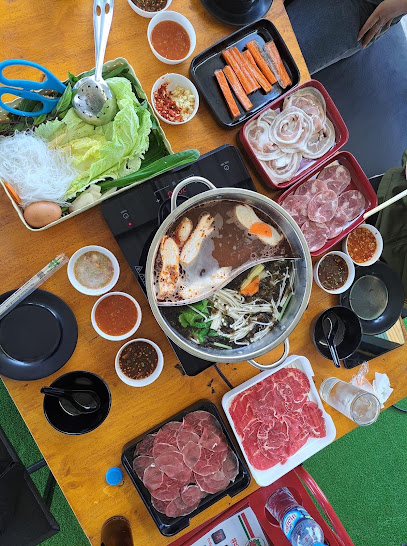
Cocktail bar
Discover Pak Beng's vibrant cocktail bar, where expertly crafted drinks and a lively ambiance create unforgettable nightlife experiences.

Local Phrases about Sainyabuli Province
-
- Helloສະບາຍດີ
[sa-bai-dee] - Goodbyeຂ້ອຍກັບຂ້ອຍ
[koy kap koy] - Yesຂໍ້
[khoon] - Noບໍ່
[boh] - Please/You're welcomeກະລຸນາ
[ka-loun-na] - Thank youຂອບໃຈ
[kop jai] - Excuse me/Sorryກະລຸນາສົບພຽງ
[ka-loun-na soh ping] - How are you?ໂດຍກົວຢູ່?
[dai kwai yu?] - Fine. And you?ດອຍກົວຢູ່. ອາກ?
[dai kwai yu. ak?] - Do you speak English?ເຈົ້າพูดภาษาອັງກິດບໍ່?
[jao poot pasa ang-kit boh?] - I don't understandຂ້ອຍບໍ່ເຂົ້າ
[koy boh kow]
- Helloສະບາຍດີ
-
- I'd like to see the menu, pleaseຂ້ອຍຕ້ອງເບິ່ງເມືອງການອາຫານ, ກະລຸນາ
[koy tong bong muang kan aharn, ka-loun-na] - I don't eat meatຂ້ອຍບໍ່ກິນຊີ້ງ
[koy boh kin sing] - Cheers!ສະຫວັນກັບ!
[sa-wan kap] - I would like to pay, pleaseຂ້ອຍຕ້ອງຈ່າຄິດ, ກະລຸນາ
[koy tong chak dit, ka-loun-na]
- I'd like to see the menu, pleaseຂ້ອຍຕ້ອງເບິ່ງເມືອງການອາຫານ, ກະລຸນາ
-
- Help!ຊ້າງງານ!
[sang nan] - Go away!ຍົກຍາກອອ!
[yok yak oh] - Call the Police!ໂທກັມພູລິກ!
[to kam phu lik] - Call a doctor!ໂທກັມນ້ຳມ່ວງ!
[to kam nam mwang] - I'm lostຂ້ອຍປາຍຈາກທີ່
[koy pai jak thi] - I'm illຂ້ອຍຈິງເຈັັຍ
[koy jing jai]
- Help!ຊ້າງງານ!
-
- I'd like to buy...ຂ້ອຍຕ້ອງຊື້...
[koy tong su...] - I'm just lookingຂ້ອຍຂວາງການ
[koy wang kan] - How much is it?ມັນຄ່າເງິນເຕັມ?
[man ka keng neum?] - That's too expensiveນີ້ແມ່ນຫຍັງເຫມື່ນ
[ni maen yang meun] - Can you lower the price?ເຈົ້າໄດ້ຜ່ານລາຄາຕ່ຳ?
[jao dai pan la ka tum?]
- I'd like to buy...ຂ້ອຍຕ້ອງຊື້...
-
- What time is it?ເວລາແລງແມວ?
[welaa leng meua?] - It's one o'clockແລງແມວສິບເຂົ້າ
[leng meua sip kow] - Half past (10)ສາມາດເຂົ້າ (ສິບ)
[samat kow (sip)] - Morningເຊີ້ງ
[seng] - Afternoonແລງວຽງ
[leng wiang] - Eveningກາງວຽງ
[kang wiang] - Yesterdayເວັບວຽງ
[wa wiang] - Todayມື້ນີ່
[me ni] - Tomorrowມື້ອື່ນ
[me un] - 1ໜ້າ
[na] - 2ສອງ
[song] - 3ສາມ
[sam] - 4ສີນ
[see] - 5ຫ້າ
[ha] - 6ຫົວ
[hu] - 7ໂປ
[or] - 8ແປ
[pa] - 9ເກົາ
[kao] - 10ສິບ
[sip]
- What time is it?ເວລາແລງແມວ?
-
- Where's a/the...?ມັນຢູ່ເຈົ້າສາມາດ...?
[man yu jao samat...?] - What's the address?ທີມີນີ້ຢູ່ໃກ້?
[ti mi ni yu kai?] - Can you show me (on the map)?ເຈົ້າສາມາດສະແດງຂ່າວຂໍ້ສົນທາງ?
[jao samat sa deang kao kan son tang?] - When's the next (bus)?ແລງມື້ນັ້ນຄັນ (ລົດ)?
[leng meun ni khon (lot)?] - A ticket (to ....)ໜານລົດ (ທີ່ ....)
[na lot (thi ....)]
- Where's a/the...?ມັນຢູ່ເຈົ້າສາມາດ...?
History of Sainyabuli Province
-
Sainyabuli Province, nestled in the northwest region of Laos, boasts a rich tapestry of history dating back to ancient times. The area was once part of the powerful Lan Xang Kingdom, which ruled from the 14th to the 18th centuries. Archaeological evidence suggests that the region was settled even earlier, with remnants of ancient communities that were engaged in agriculture and trade.
-
In the late 19th and early 20th centuries, Sainyabuli Province came under French colonial rule as part of French Indochina. The French influence is still evident in some of the colonial architecture found in the provincial capital, also named Sainyabuli. During this period, the French introduced modern infrastructure, including roads and administrative buildings, which played a crucial role in the development of the province.
-
During World War II, the province was briefly occupied by Japanese forces as part of their broader campaign in Southeast Asia. This period was marked by significant upheaval and disruption. The Japanese occupation was relatively short-lived, but it left a lasting impact on the local population, who experienced the hardships of war and occupation.
-
Following the end of World War II and the subsequent withdrawal of Japanese forces, Laos, including Sainyabuli Province, sought independence from French colonial rule. The province was a significant area of activity for the Pathet Lao, the communist movement that fought for Lao independence. The struggle culminated in the establishment of the Lao People's Democratic Republic in 1975, bringing an end to centuries of foreign influence and domination.
-
Sainyabuli Province is home to a diverse array of ethnic groups, including the Lao Loum, Lao Theung, and Lao Sung, as well as various hill tribes such as the Hmong and Khmu. Each group contributes to the rich cultural tapestry of the province with unique customs, festivals, and traditions. The annual Elephant Festival, held in the provincial capital, celebrates the cultural significance of elephants in Lao society and draws visitors from around the world.
-
The province is renowned for its stunning natural landscapes, including mountains, rivers, and forests. It is home to several protected areas, such as the Nam Phouy National Biodiversity Conservation Area, which hosts a variety of wildlife, including elephants, gibbons, and rare bird species. Conservation efforts in the province aim to preserve these natural wonders while promoting sustainable tourism and community involvement.
Sainyabuli Province Essentials
-
Sainyabuli Province is accessible via multiple routes. The nearest international airport is Wattay International Airport in Vientiane, approximately 300 kilometers away. From Vientiane, travelers can take a domestic flight to Luang Prabang, followed by a bus or taxi ride to Sainyabuli. Alternatively, there are direct buses from Vientiane to Sainyabuli, which take around 8-10 hours. Private car hire is also an option for a more comfortable journey.
-
Within Sainyabuli Province, transportation options include local buses, tuk-tuks, and taxis. Buses and minivans connect major towns and villages. For more flexibility, renting a motorbike or a car is recommended, especially for visiting remote areas. Note that road conditions can vary, so a vehicle with good suspension is advisable for long trips.
-
The official currency of Laos is the Lao Kip (LAK). While credit cards are increasingly accepted in larger hotels and restaurants, cash is still king, especially in smaller establishments and rural areas. ATMs are available in Sainyabuli town, but it is advisable to carry enough cash for your needs, as ATM availability can be limited outside the main towns.
-
Sainyabuli is generally safe for tourists. However, it is wise to take standard safety precautions. Avoid walking alone at night, especially in unfamiliar or poorly lit areas. Petty crimes like pickpocketing can occur in crowded places, so keep an eye on your belongings. There are no specific high-crime areas targeting tourists, but always stay vigilant.
-
In case of emergency, dial 1191 for police assistance and 1195 for medical emergencies. Major hospitals and clinics are located in Sainyabuli town. It is also advisable to have travel insurance that covers medical emergencies. For minor health issues, there are pharmacies in the town where over-the-counter medications can be purchased.
-
Fashion: Dress modestly, especially when visiting religious sites. Avoid wearing revealing clothing. Religion: Show respect at temples and monasteries. Remove your shoes and cover your shoulders and knees when entering sacred places. Public Transport: Be respectful and give up your seat to monks and elderly passengers. Avoid loud conversations. Greetings: A traditional Lao greeting involves placing your hands together in a prayer position and a slight bow. Eating & Drinking: Try local dishes and accept food offerings graciously. Avoid wasting food, as it is considered disrespectful.
-
To experience Sainyabuli like a local, visit the morning markets where you can buy fresh produce and traditional Lao goods. Engage with locals, who are typically friendly and eager to share stories about their culture. Don't miss the annual Elephant Festival, which showcases the province’s cultural heritage and the importance of elephants in local life. For a unique experience, explore the natural beauty of Nam Phouy National Biodiversity Conservation Area, home to diverse wildlife and stunning landscapes.
Trending Landmarks in Sainyabuli Province
-
Patuxay - Victory Monument
-
Kuang Si Waterfall
-
Pha That Luang Vientiane
-
Phousi Hill
-
Wat Xiengthong
-
National Museum
-
Tat Sae Waterfalls
-
Pak Ou Caves
-
Ban Xang Hai
-
Elephant Conservation Center
-
Garavek Storytelling
-
MandaLao Restaurant and Elephant Rescue Park
-
Manifa Elephant Camp Luang Prabang Office
-
Elephant Conservation Center, Luang Prabang
-
Luang Prabang Old Quarter
Nearby Cities to Sainyabuli Province
-
Things To Do in Nan
-
Things To Do in Vang Vieng
-
Things To Do in Phonsavan
-
Things To Do in Chiang Rai
-
Things To Do in Xieng Khouang
-
Things To Do in Vientiane
-
Things To Do in Muang Sing
-
Things To Do in Loei
-
Things To Do in Udon Thani
-
Things To Do in Chiang Mai
-
Things To Do in Sukhothai
-
Things To Do in Pai
-
Things To Do in Mae Hong Son
-
Things To Do in Sapa
-
Things To Do in Thakhek




